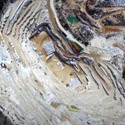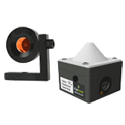Sectores de aplicación de los sensores de Senceive y Omnidots

Auscultación vía ferrea
Auscultación de superestructura o vía; peralte, alaveo y perfil longitudinal. Monitoreo de infraestructura. Convergencias, deformaciones y subsidencias en túneles y puentes

Monitorización de taludes
Alerta temprana de movimientos y desprendimientos

Auscultación de edificios
Auscultación de superestructura o vía; peralte, alaveo y perfil longitudinal. Monitoreo de infraestructura. Convergencias, deformaciones y subsidencias en túneles y puentes

Monitoreo de túneles
Convergencias Asentamientos

Auscultación de puentes
Monitoreo y auscultación de puentes

Geotecnia
Excavaciones profundas, auscultación y monitoreo, movimientos del suelo y subsuelo, automatización de instrumentación geotécnica, inclinómetros, IPI, piezómetros, células de carga, extensómetros

Auscultación de minas
Monitoreo y auscultación de minas a cielo abierto o subterraneas

Auscultación de carreteras
Control de taludes, firme, tuneles en tiempo real

Patrimonio
Monitorización obra de fábrica para predicción y mantenimiento de edificios y estructuras

Infraestructuras especiales
Auscultación de superestructura o vía; peralte, alaveo y perfil longitudinal. Monitoreo de infraestructura. Convergencias, deformaciones y subsidencias en túneles y puentes

Energía
Monitoreo y auscultación de presas, oleoductos, parques eólicos, chimeneas, estabilidad, deformaciones, presión, tensión, pruebas de carga

Auscultación en topografía
Las nuevas oportunidades del topógrafo en la auscultación y monitorización por sensores

 SU COMPRA
SU COMPRA










